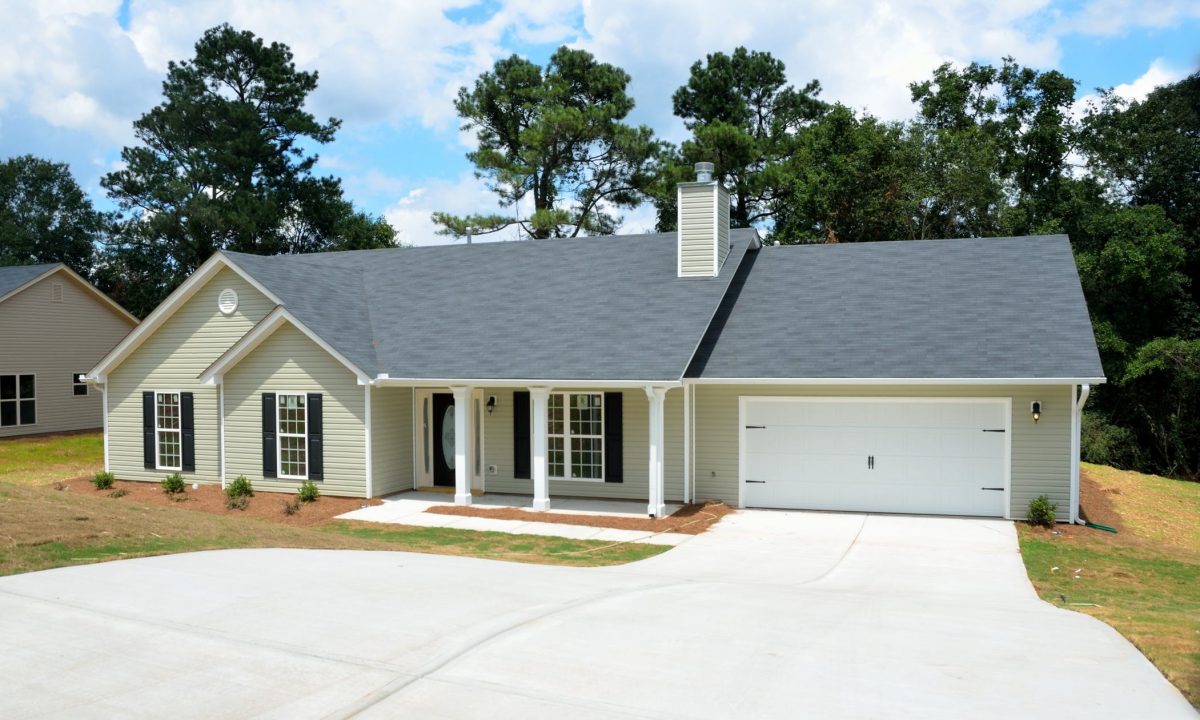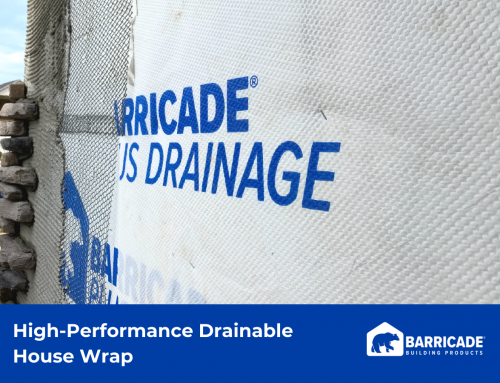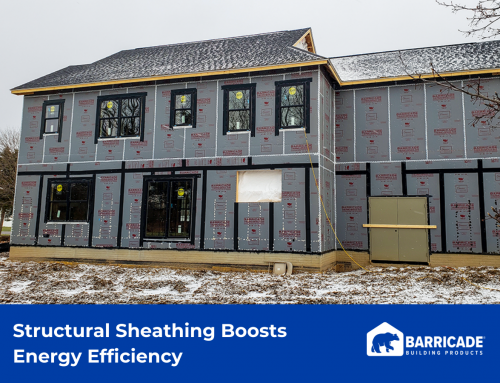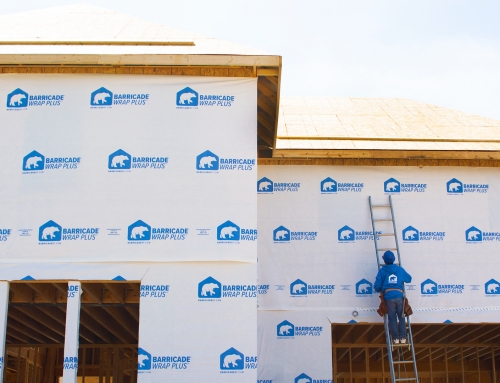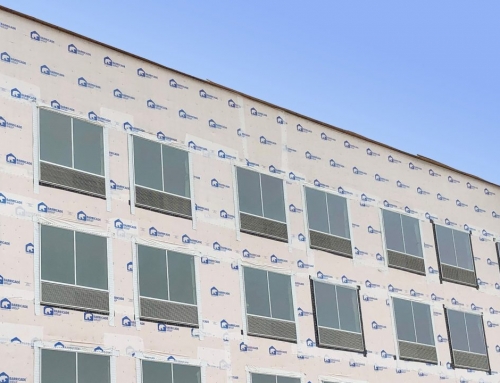Barricade® Roof Underlayments have all of the benefits of both asphalt-saturated felt and synthetic underlayments. However, an added advantage of Barricade® Underlayments is they save time and money because they can be installed quicker than standard 36” wide felt underlayments.
Synthetic Roof Underlayment Vs. Asphalt Felt

Asphalt felt and synthetic underlayments are products installed under all the roofing materials and directly on a roof deck. The underlayment provides a secondary weather barrier against wind-driven rain and snow. The shingles are the primary weather barrier.
Asphalt-Saturated Felt Underlayment
Roofing asphalt-saturated felt is a blend of cellulose, polyester, bitumen, and asphalt, soaked in a waterproofing agent. It comes in two thicknesses: fifteen-pound and thirty-pound. Thirty-pound felt is more thick and stiff than fifteen-pound, so thirty-pound is more resistant to damage during installation and can protect the roof longer if exposed to outside elements like rain, wind, hail, and snow. Asphalt-saturated felt underlayments are semi-permeable and typically have a perm rating of five to seven.
Builders and architects have used asphalt-saturated felt underlayment for decades because it is a low-cost material and is easy to install. Importantly, asphalt-saturated felt underlayment is commonly allowed by local building codes.
Synthetic Underlayment
Most synthetics are spun or woven from either polypropylene or polyethylene. The specific manufacturing process produces synthetic underlayments with different properties such as the thickness, exposure time, and resistance to damage during the installation process, etc. Like asphalt-saturated felt, comparisons between synthetic underlayments are by weight. However, synthetic underlayments utilize grams-per-square-meter (GSM) as their measurement.
Advantages of Asphalt-Saturated Felt Underlayment Over Synthetic Underlayment
- Asphalt felt underlayment is often much less expensive than synthetic underlayment. A rough estimate per square foot is:
- Felt 15-pound – 5 cents per square foot
- Felt 30-pound – 10 cents per square foot
- Vapor impermeable synthetic underlayment – 11 to 15 cents per square foot
- Vapor permeable synthetic underlayment – 20 to 90 cents per square foot
- Synthetic underlayment is more susceptible to wicking at laps than asphalt felt underlayment, which can lead to moisture damage to the roof.
- Felt provides an excellent seepage barrier, especially when applied in thicker layers.
- Application of asphalt felt underlayment only requires application with common tools of staples or roofing nails. Synthetic underlayment, however, requires cap nails or cap staples.
Advantages of Synthetic Underlayment Over Asphalt Felt Underlayment
- Synthetic underlay is much lighter than felt underlay; therefore, utilizing synthetic as an effective water barrier adds less weight to the roof than asphalt felt underlay.
- The lightness of synthetic underlayment makes it easier and safer to install than asphalt felt.
- Synthetic underlayment is much more tear-resistant when exposed to high winds and foot traffic than asphalt felt underlayment.
- Since synthetics do not absorb moisture, they are resistant to fungal growth and are wrinkle-free.
- Synthetic underlayments are ultraviolet (UV) resistant for between six and twelve months. Sunlight exposure degrades asphalt felt.
- Synthetic underlayment maintains its integrity when exposed to cold weather, while asphalt felt wrinkles when wet and cracks when cold.
- Synthetic underlayment rolls are 3.5-feet long and cover closer to 875-square-feet; therefore, synthetic underlayment installs faster than asphalt felt rolls that are 3-feet long and cover about 400-square-feet.
- Unlike synthetic underlayment, asphalt-saturated felt roof underlayment contains volatile compounds. Over time, these compounds will dissipate, particularly when exposed to heat, which causes the underlayment to become more moisture-absorbent and fragile.
The Advantages of Barricade® Underlayment Over Asphalt-Saturated Felt

Barricade Building Products is a first-rate manufacturer of high-quality roof underlayments. Barricade offers three levels of underlayments that are suitable for all roof coverings: Barricade UDL Pro, Barricade UDL, and Barricade UDL Plus.
All come in a cool gray surface, which is 30° cooler than black underlayments. There are many reasons why Barricade Building Products are the best choice for roofing underlayment.
- Barricade underlayments are 48-inch wide. They provide 33 percent more coverage per lap than asphalt-felt underlayment and 14 percent more coverage per lap than synthetic underlayment; therefore, Barricade underlayments are quicker to install than either felt or synthetic underlay, which saves time and money.
- Barricade underlayments have excellent tear resistance and superior strength compared to asphalt-saturated felt roof underlayment.
- Barricade underlayments are waterproof and do not absorb water, like felt underlayments. Absorbed water can damage the roof deck.
- Barricade underlayments have excellent tear resistance and superior strength compared to asphalt-saturated felt roof underlayment.
- Barricade underlayments have UV protection. Felt underlayment is not UV resistant.
- Barricade UDL – 60 days
- Barricade UDL Pro & Barricade Plus – 180 days
Learn more about Barricade Synthetic Roof Underlayment.

